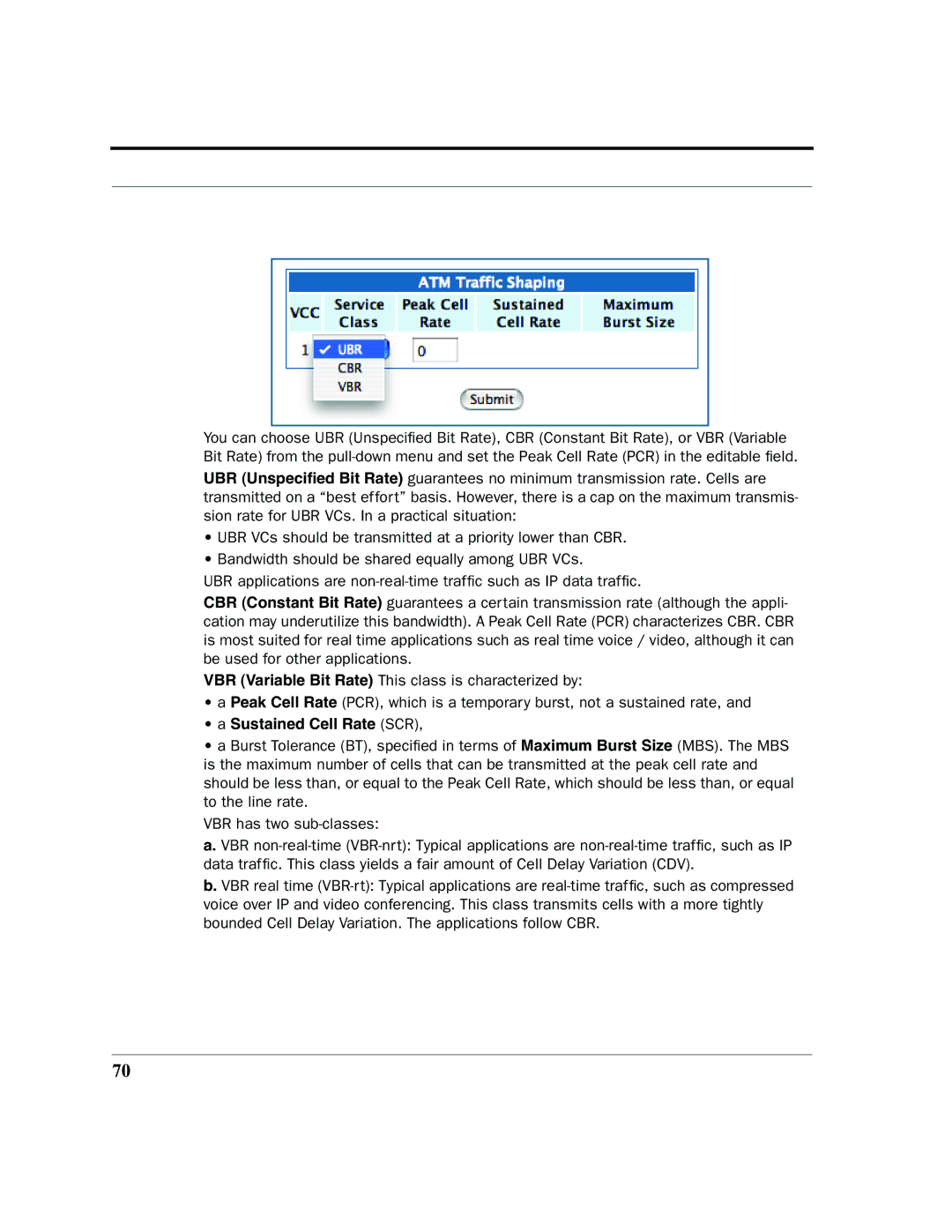
You can choose UBR (Unspecified Bit Rate), CBR (Constant Bit Rate), or VBR (Variable Bit Rate) from the
•UBR VCs should be transmitted at a priority lower than CBR.
•Bandwidth should be shared equally among UBR VCs.
UBR applications are
CBR (Constant Bit Rate) guarantees a certain transmission rate (although the appli- cation may underutilize this bandwidth). A Peak Cell Rate (PCR) characterizes CBR. CBR is most suited for real time applications such as real time voice / video, although it can be used for other applications.
VBR (Variable Bit Rate) This class is characterized by:
•a Peak Cell Rate (PCR), which is a temporary burst, not a sustained rate, and
•a Sustained Cell Rate (SCR),
•a Burst Tolerance (BT), specified in terms of Maximum Burst Size (MBS). The MBS is the maximum number of cells that can be transmitted at the peak cell rate and should be less than, or equal to the Peak Cell Rate, which should be less than, or equal to the line rate.
VBR has two
a.VBR
b.VBR real time
70
